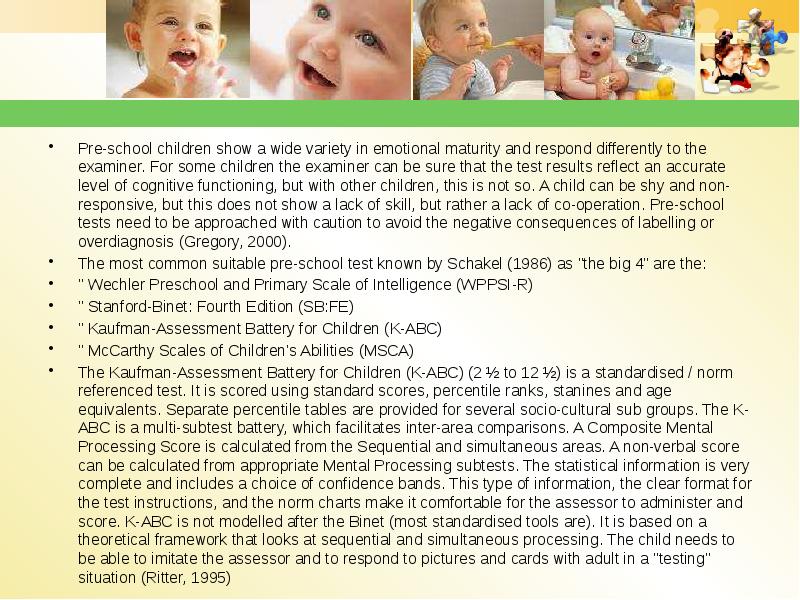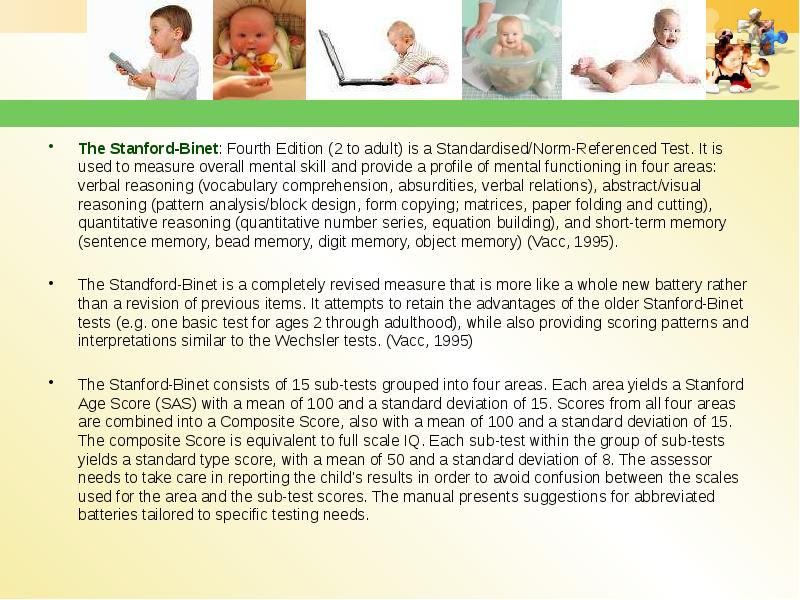Developmental Assessment of Young Children
Содержание
- 2. Introduction This work presents an overview of the development of intellectual
- 3. The stages of intellectual development formulated by Piaget appear to be
- 5. Sensory Motor Period (0 - 24 months)
- 6. The Preoperational Period (2-7 years)
- 7. Early Social Emotional Development 1. Nature and nurture combine to define
- 8. 14. The family’s culture influences all areas of a baby’s development,
- 9. Early mental health or early social emotional wellness is the developing
- 10. The drive to explore and master one’s environment is inborn in
- 11. Three Major Elements of Social Emotional Wellness in Infancy Forming close
- 12. Regulation and Stress in Young Babies
- 13. Temperament. Temperament Traits. Appears to be biologically based Fairly constant
- 14. Temperament Types
- 15. Temperament Types Flexible, Fearful, and Feisty
- 19. Brain Development When little was known about the human brain
- 20. Types of Brain Development Brain development occurs unevenly, with different parts
- 21. Visual and auditory development the development of the sight and
- 22. Language development the development of language and speaking skills. Parents should
- 23. Physical and motor development – the development of control over
- 24. Emotional and social development – the development of emotions and
- 25. Parents, as the primary care givers for young children, can contribute
- 26. Infant and Pre-school tests Infant scales and pre-school tests measure
- 27. Pre-school children show a wide variety in emotional maturity and respond
- 28. The Stanford-Binet: Fourth Edition (2 to adult) is a Standardised/Norm-Referenced Test.
- 29. Conclusion Testing children is a difficult process in which many
- 30. References: Gibbs, E.D. & Teti, D.M. (1990). Interdisciplinary assessment of infants:
- 31. Скачать презентацию






























Слайды и текст этой презентации
Презентация на тему Developmental Assessment of Young Children доступна для скачивания ниже:
Похожие презентации


























![Автоматизация звука [С] в слогах, словах, предложениях и стихах](/documents_2/bec120c4bbbc0d06a86aca7160a070e4/thumb.jpg)


